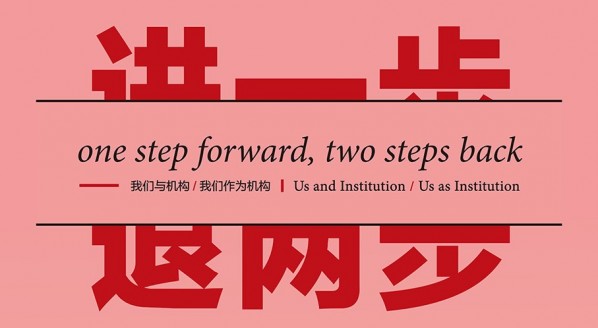
During the second half of 20th century, Institutional Critique occurred in parallel to the development of art system. Individual artists opened up new possibilities of exploring institutional models and approaches where modernity was employed and re-defined. The term implied the so called “internationalization process” that started during the early 1990’s in many places, and signaled new protocols that we still share today. With the goal of establishing an expanded definition of Institutional Critique, One Step Forward, Two Steps Back — Us and Institution, Us as Institution reaches out for a diverse history of dissent against power—a shifting target. In localities where art institutional infrastructure didn’t exist, the state was taken as the symbol of institution and exposed to critique; on the other hand, in situations that institutional infrastructure started with the construct of nation states, nationalism represented a strong critique against the overwhelming process of internationalization. Hence, the exhibition positions artists as agents that linger between power and powerlessness.
The sections of this exhibition reveal the range of positions that the artist takes in relation to the institution and highlights transitions that provide new definitions for institutions in specific periods. These include the relationship between the artist and the state, the art institution and the artist, the internationalization of contemporary art, and the self-institutionalization that is common today. By proposing a negotiable context that we all share and partake in, it investigates what an institution is and how we institute by challenging the understanding of an institution as merely a museum or a gallery. In search of shifting methods of exhibition display and narrative, the exhibition symbolically opens up each section with works by Mladen Stilinovic. Stilinovic’s practice from the mid-1970s mirrors the processes that former Yugoslavia went through over the last three decades, and continues to inspire us to examine power structures, institutional protocols, and the role of the market and capitalism in art. It represents the artist’s vigilance and how these transitional processes have influenced our practice. Stilinovic’s solo presentation within the group exhibition format represents the common concerns of the art system today and acknowledges active withdrawal as artistic action against celebrated mass production and the symbolic process of progress.
About the exhibition
Participating Artists: Art Workers Coalition, Felice Beato, Black December Movement, Cao Chongen, Duan Jianyu, Ho Tzu Nyen, Khaled Hourani, Huang Yongping, Chitti Kasemkitvatana, Lee Wen, Magicien de la Terre, Wong Hoy Cheong, Mladen Stilinovic, Vandy Rattana, New Art Movement, Gulf Labor, Pratchaya Phinthong, Redza Piyadasa, Judy Freya Sibayan, Tang Dawu, Anton Vidokle and Pelin Tan, Wang Xingwei, Xiamen Dada, Yu Youhan
Curated by Biljana Ciric
Exhibition researcher: Amara Antilla
Opening: June 29th 2013 16:00
Exhibition Period: June 30th - August 11th 2013 (Free entry, closed on Mondays except for Holidays)
Exhibition and seminar are supported by: French Consulate in Guangzhou, Department for Culture and Education (DCAE) of the General Consulate of the Federal Republic of Germany in Shanghai, Consulate-General of the Kingdom of the Netherlands, National Art Council Singapore.
Individuals and institutions have contributed to this exhibition: Branka Stipančić, Jean-Hubert Martin, Pakhruddin & Fatimah Sulaiman, Segolene Dubernet, GB Agency (Paris), David Teh, Khim Ong, Koh Nguang How, Yap Saubin,Rogue Art (Kuala Lumpur), Roslisham Ismail aka Ise, Claus Heimas, Jiao Yaoming, Lin Jiahua, Frazer P. Dougherty, Center for the Study of Political Graphics (Los Angeles), Primary Information (New York), The J. Paul Getty Museum (Los Angeles), Centre national d'art et de culture Georges Pompidou, Fx Harsono, Queensland Art Gallery, Eslite Gallery, Archives of American Art, Smithsonian Institution
Courtesy Guangdong Times Museum, for further information please visit www.timesmuseum.org.




























